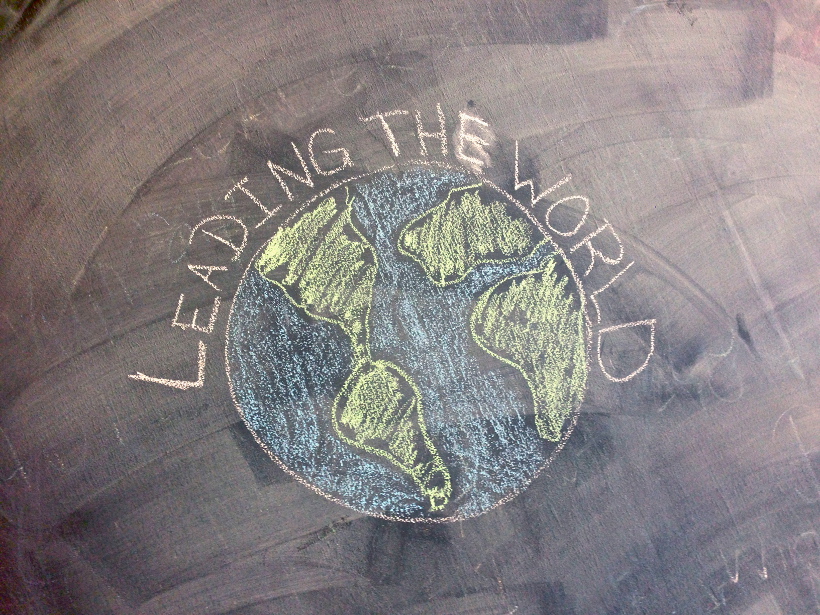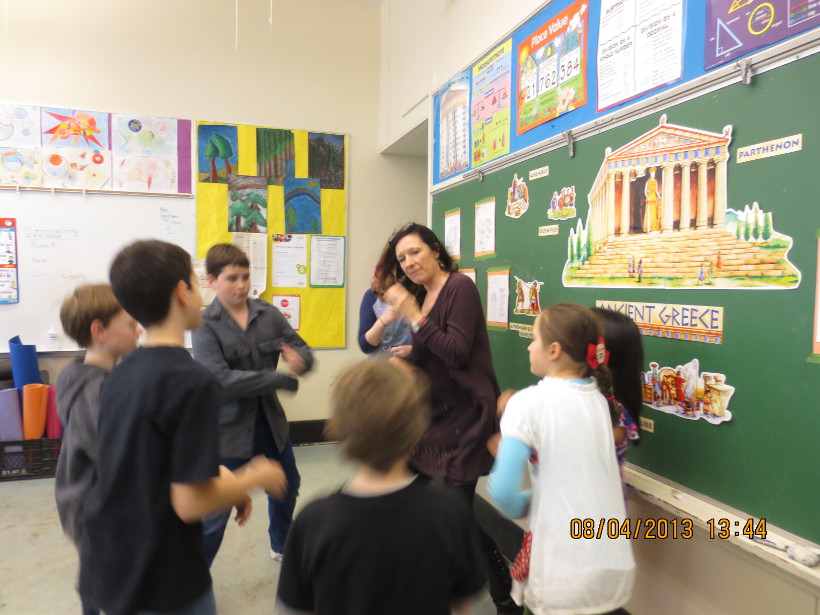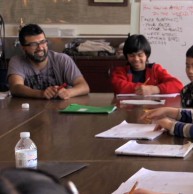Leading the World
Social Studies - Grade 7
This unit of inquiry is not a recipe book but rather a launchpad to inspire new BIG IDEAS. We encourage you to use and/or modify one, or several of the BIG IDEAS below. Adapt it to the grade/ ability level of your students.
Enduring Understanding
Citizens shape the identity of a nation and the world
Guiding Questions
How can we, as citizens, lead change in our nation and the world?
Mind Opening
Choose or devise practices to encourage students to be open to new experiences and ways of thinking in your classroom. For example, the MindUP in-school program.
Discovery and Inspiration:
Launch the Project
• Introduce the Theme: Present the Enduring Understanding and Guiding Questions using vocabulary that is appropriate for your grade level.
• About Vancouver Biennale: Play a short video.
• Create Project Space: Brainstorm ideas to make the project theme visual and visible using bulletin boards, and/or a project corner to share relevant materials and inquiry questions and processes.
Reference Resources:
• Introduction to Sculpture and Public Art Unit Plan for information on how art has evolved over time and the unique experience sculptures and/or public art brings
• Vancouver Biennale 2014-2016 Exhibition Theme: Open Borders / Crossroads Vancouver
• Freezing water #7 (Ren Jun, China) from Vancouver Biennale 2009- 2011 Exhibition
• About Artist and Artwork (PDF)
Other Resources
Soulpancake Kid President Video: A Pep Talk from Kid President to You
Book: Our Earth: How Kids are Saving the Planet by Janet Wilson
Book: One Peace: True Stories of Young Activists by Janet Wilson
Book: If the World Were a Village: A Book about the World’s People by David J. Smith
Learning to Learn:
Art Inquiry
Project image of Freezing water #7 and encourage students to freely explore and interact with the art pieces individually and in groups. This Art Inquiry process enables the students to practice observing, describing, interpreting, and sharing visual information and personal experiences. Use the Art Inquiry Worksheet (PDF) to guide and capture their ideas and impressions. Customize or create your own Art Inquiry Worksheet as appropriate for your project and class needs.
Facilitate creative thinking on relating the art form to specific leadership attributes (e.g. fluidity, adaptability, visibility, simplicity)
Shared Insights
• Sharing Art Inquiry Experience: Ask students to share the Art Inquiry Worksheet responses in class.
• Artist Themes – Research: In small groups students rotate between information stations detailing the artist’s life and work. Station topics include: (1) education and training; (2) lifetime of artwork; (2) materials and processes; (3) beliefs and values. At each station, students answer questions and complete a task. For example, at the station “life’s work” students might plot the artist’s various installations on a map of the world.
• Artist Themes – Change: Ren Jun was inspired by spilt water and the shape it creates. This installation in particular is called Freezing Water #7. Consider the many states of water, fluid liquid, solid ice and airy gas. Facilitate a discussion on the nature of change, in what instances it is fluid? In what instances is it difficult and solid? How can leaders promote change?
• Connecting Leadership Qualities with Abstract Art Form Challenge: Have students discuss leadership. What do they know about being a leader?
Set up carousel activity with Venn diagram at each station.
- Image of Freezing Water #7 next to a picture of the Canadian flag
- Image of Freezing Water #7 next to a picture of Barack Obama
- Image of Freezing Water #7 next to a picture of 12 year old child
- Image of Freezing Water #7 next to a picture of a globe
Work in small groups, students share words from the middle of their Venn Diagram that apply to both leadership Freezing Water #7.
Inquiry Challenges
• How do leaders influence a nation?
Ask students to identify influential individual and research roles. How do they influence the world? Is this person a good leader? Students will present their findings to the class in a medium of their choice.
Ask the students: How do these leaders influence our daily life?
• Can we, as citizens, influence the world in positive ways?
Students are given information on various influential youth and adult leaders. They will be asked to investigate what has made these individuals influential and look at the factors which indicate a person’s scope of influence. Students will be asked to create a scale of influence and place the various leaders they have researched on their scale. Students can discuss: What does it mean to be influential? In what ways does age affect influence? What additional factors play a role in an individual’s degree of influence?
• Given the BIG IDEAS of Open Borders Crossroads Vancouver, how can a nation have a positive influence on the world?
Ask the students to work in groups and pick one global topic that they are interested in and research that topic. Students will create an action plan that shows how Canada can play a leadership role in this global topic.
Create a mock parliament where groups of students are assigned to the role of a Minister, e.g. Minister of the Status of Women, Minister of Finance. The class will receive an issue with global ramifications. Each group of Ministers will discuss their position on this issue. The class will be brought back together to engage in a mock parliamentary debate. After the debate, the class can take a vote on the issue. After the class has voted, ask students to look at the ripple effect of their decision, including the impacts on individual Canadians, Canada as a nation, and the world.
Student Creations and Taking Action
Students and teachers decide on medium and methods to communicate their BIG IDEAS on how citizens shape the identity of a nation and the world. Consider use of posters, websites with social media integration, montages, written essays/poems, film and audio, dance, visual arts or theatre.
Can we, as citizens, collectively influence the world in positive ways?
Students brainstorm the specific needs of their school and address them. Students pick a project as a class and are given time to initiate this project together.
Students create personal action plans that can be carried out over a given period of time. Students will be asked to document their journey through their personal action plan and share their experience. Possible ways of sharing include: blogs, learning fair with other classes, artistic representations displayed in public venues.
Reflection
• Teacher and students can reflect on their entire learning process by revisiting the Enduring Understanding and relevant Guiding Questions.
• How did the unit of study open inquiry, create cross–curricular learning opportunities and/or apply learning to real life situations? Has this unit of inquiry changed your opinions, values and world view? In what ways, if any, has it helped you grow as a learner?
Ideas for Cross-Curricular Access
• Mathematics – Statistics, Probability, Data Analysis: Looking at how global statistics relate to students in the class, ask students to make a tally of the different languages that individuals in the class can speak. Turn this data into a bar graph and compare the class data to global language data (for easy statistic source consider using If the World Were a Village book). Ask students to discuss, given the data, how do we fit into the global landscape?
During the scale of influence challenge students may be encouraged to assign numerical values on their scale, turning it into a number line.
• Science – Particle Attributes and Interaction: Relating leadership attributes to particle attributes. Mix vinegar and baking soda, as well as cornstarch and water in two separate dishes. Observe the results. Ask students to select from a list of attributes of vinegar, baking soda, cornstarch and water that they think make the particles good/bad mixer. Relate the attributes to leadership attributes that bring people/nations together. Have different types of particles available for students to mix.
Credits
Written by: Danielle Bourgon and Mina Rohani, 2013 UBC Elementary School Teacher Candidates
©2013 Vancouver Biennale


